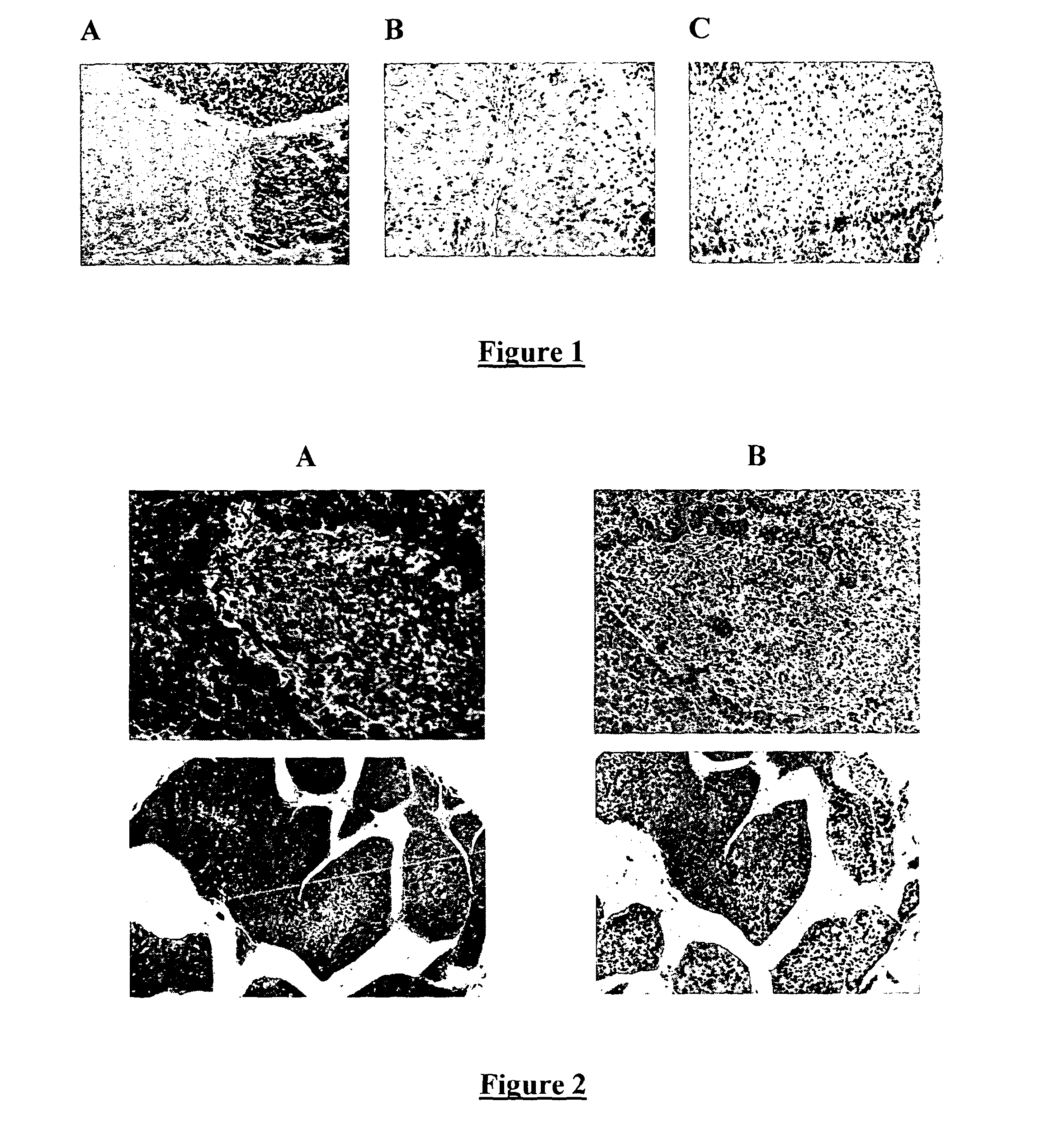Treatment of liver cancer
a liver cancer and treatment technology, applied in the field of liver cancer treatment, can solve the problems of poor hcc prognosis and only about 3-5% survival rate, and achieve the effect of decreasing the amount or activity of tlr9 and decreasing the amount or activity of tlr9
- Summary
- Abstract
- Description
- Claims
- Application Information
AI Technical Summary
Benefits of technology
Problems solved by technology
Method used
Image
Examples
example 1
[0147]The tissue used was tissue microarray paraffin embedded sections, purchased from Vbiolabs (Cambridge, UK). Each slide contained 102 liver tissue cores. 9 cores were from normal tissue, 26 cores were from hepatitis B and C positive liver tissue, 25 cores were from cirrhosis patients and 42 cores were taken from cancerous liver tissue. Slides were stained for TLR2 (ab47840), TLR4 (76B357.1), TLR9 (ab12121), caspase3 and KI67 (ab16667) using kits purchased from Abcam, UK (except TLR4, kits purchased from Lifespan Bioscience).
1. Paraffin was removed by placing the slides in an oven for one hour prior to processing. Fresh xylene was then added (four changes, each for 5 minutes).
2. Sections were rehydrated using: One change of absolute ethyl alcohol (5 minutes); One change of 90% ethyl alcohol (5 minutes); One change of 80% ethyl alcohol (5 minutes); One change of 70% ethyl alcohol (5 minutes).
3. The slides were washed in PBS for 5 minutes.
4. For antigen retrieva...
example 2
Cells in Culture
[0151]The aim of the study was to assess the expression of TLR9 in cell lines of the following cell cultures (HEPG2, Huh 7, HUCCT). We used frozen cell lines at the beginning of the experiment. Medium=RPMI with L-glutamine (Gibco, Invitrogen) (500 ml), penicillin streptomycin 10.000 (5 ml) and FBS heated inactivated (50 ml). Thawing the cells: All the cell lines were frozen. 40 ml of the media without FBS was warmed in a 37° C. water bath half an hour before the start. The cells were also warmed until they became liquid (defrosted) and put it in the warm media. The cells were then centrifuged (10 minutes, 1500 cycle / min, 37° C.). The media was discarded. 4 ml of media was placed with FBS and the alive cells counted using a hemocytometer. After being sure of the number of good alive cells we put the cells in a flask containing 20 ml of media with FBS. Cultures were incubated at 37° C. and CO2 5%. Once the cells were growing, culture medium was removed and discarded th...
example 3
Animal Model for HCC
[0154]We chose a Fisher Rat to be our model. We started with 18 Fisher rats, which were 5 weeks old on the beginning of the experiment. We divided them into 3 groups. They were acclimatised for one week before the experiment at room temperature 29-32° C. and humidity 60%-65%. The first group used 6 Fisher rats as an HCC model. On the day we started we weighed them and determined the exact dose for each rat.
[0155]We started with a single dose of DEN (Diethylnitrosamine™, sigma) using 100 mg / kg as single intraperitoneal injection. Then we put NMOR (Nitrosomorpholine™, Sigma) in the concentration of 80 ppm in the water for 14 weeks. The second group, another 6 Fisher rats, got the same HCC model treatment (DEN and NMOR) plus we gavaged them with norfloxacin in the dose of 20 mg / kg per day. The third group, at the same time, was 6 rats with a control of just plain water. We weighed them every other day and stopped treatment on the 14th week, then left them for two mo...
PUM
| Property | Measurement | Unit |
|---|---|---|
| Fraction | aaaaa | aaaaa |
| Immunogenicity | aaaaa | aaaaa |
Abstract
Description
Claims
Application Information
 Login to View More
Login to View More - R&D
- Intellectual Property
- Life Sciences
- Materials
- Tech Scout
- Unparalleled Data Quality
- Higher Quality Content
- 60% Fewer Hallucinations
Browse by: Latest US Patents, China's latest patents, Technical Efficacy Thesaurus, Application Domain, Technology Topic, Popular Technical Reports.
© 2025 PatSnap. All rights reserved.Legal|Privacy policy|Modern Slavery Act Transparency Statement|Sitemap|About US| Contact US: help@patsnap.com



